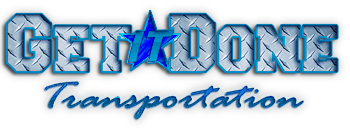In the meticulous sphere of vehicle transport, managing unforeseen damages during transit becomes a paramount concern, interweaving customer interests, legal frameworks, insurance protocols, and company reputations. It necessitates a holistic examination of protocols, redressal mechanisms, responsibilities, and resolutions to amicably address and rectify such occurrences.
1. Initial Assessment and Notification:
- Immediate Inspection:
- Upon delivery, a thorough inspection of the vehicle should be conducted to assess any potential damage incurred during transport.
- Prompt Notification:
- Any identified damages should be immediately reported to the transport company, initiating the claim process and ensuring adherence to reporting timelines.
2. Documentation and Evidence Collection:
- Photographic Evidence:
- Detailed photographs of the damaged areas are crucial for substantiating claims and providing a visual record of the extent and nature of the damage.
- Bill of Lading:
- Comparing the condition of the vehicle at pick-up and delivery, as documented in the Bill of Lading, is critical for establishing the occurrence of damage during transit.
3. Engagement with Transport Company:
- Claim Submission:
- A formal claim, inclusive of all evidence and documentation, should be submitted to the transport company, adhering to the prescribed procedures and timelines.
- Communication Channels:
- Open, transparent, and consistent communication with the company is vital for understanding the progress and resolutions of the claim.
4. Insurance Considerations:
- Insurance Claim Filing:
- Concurrently, an insurance claim needs to be filed with the insurance provider, aligning with the policy terms and conditions.
- Insurance Assessment:
- The insurance company will conduct an independent assessment to determine the validity, liability, and compensation associated with the claim.
5. Resolution and Compensation:
- Assessment of Liability:
- The liability for the damage will be assessed based on contractual terms, legal stipulations, and evidence provided.
- Compensation Determination:
- Depending on liability assessments, compensation amounts will be determined, reflecting repair costs, diminished value, and other relevant factors.
6. Legal Framework and Obligations:
- Contractual Terms:
- The terms and conditions of the transport contract delineate the obligations, liabilities, and resolutions related to damages incurred during transit.
- Legal Recourse:
- In cases of disputes or unsatisfactory resolutions, legal recourse may be sought, emphasizing statutory compliance and judicial interpretations.
7. Customer Rights and Responsibilities:
- Rights to Redressal:
- Customers have the right to seek redressal and compensation for damages, ensuring their interests are protected.
- Responsibility to Comply:
- Adherence to prescribed procedures, timelines, and documentation requirements is the responsibility of the customer to ensure the validity of the claim.
8. Company Reputational Management:
- Customer Satisfaction:
- Addressing damages effectively and fairly is crucial for maintaining customer satisfaction and trust.
- Reputational Impact:
- How a company manages damage claims can significantly impact its reputation, influencing customer perceptions and future business prospects.
9. Remedial Measures and Improvements:
- Operational Enhancements:
- Instances of damages necessitate a review of operational practices and the implementation of enhancements to prevent recurrence.
- Training and Awareness:
- Ongoing training and awareness programs for staff are imperative to instill best practices and enhance handling and transport protocols.
10. Transparent and Fair Processes:
- Impartial Assessments:
- The assessment of damages and liabilities should be conducted impartially, ensuring fairness and objectivity.
- Clear and Comprehensive Processes:
- The processes related to damage claims should be clear, comprehensive, and accessible, facilitating customer understanding and engagement.
Conclusion:
The paradigm of addressing damages during vehicle transport embodies a comprehensive framework of empathetic responsiveness, procedural rigor, ethical conduct, and collaborative resolution. It is a microcosm reflecting the symbiotic interplay between customer advocacy, corporate responsibility, legal sanctity, and insurance protocols, converging towards the attainment of equitable redressal and sustainable relationships.
In this intricate tableau, each stroke of action, each hue of interaction, and each texture of resolution coalesce to depict the multidimensional journey from incident acknowledgment to claim resolution. It emphasizes the essence of transparent communication, the valor of ethical practices, the pursuit of customer satisfaction, and the commitment to continual improvement, weaving a cohesive narrative of trust, integrity, and harmony in the vibrant canvas of vehicle transport services.
In essence, the orchestration of damage management in vehicle transport resonates as a harmonious symphony, echoing the timeless values of fairness, respect, and excellence. It illuminates the path towards fostering enriched customer experiences, fortified reputational standing, and enhanced operational excellence, sculpting the contours of a resilient and progressive vehicle transport ecosystem.







